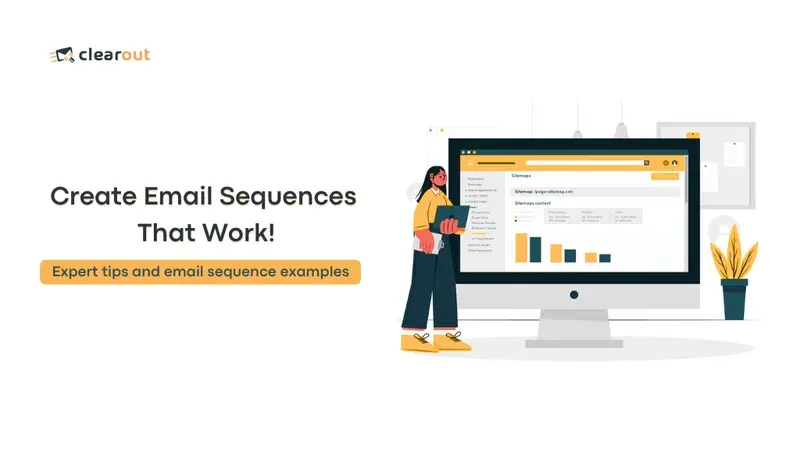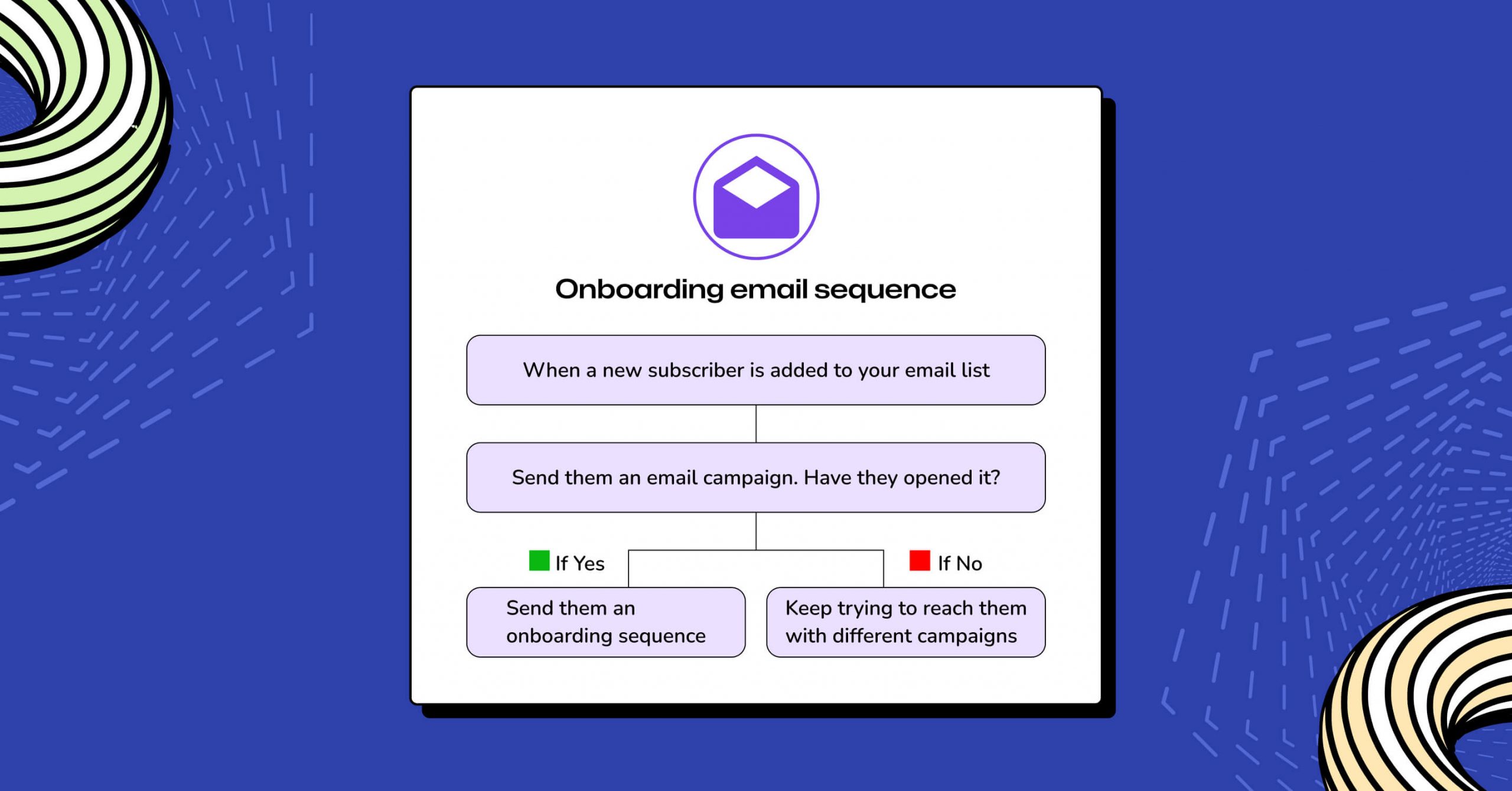Imagine you could communicate with your audience in a way that feels personal and timely, without manually sending each message. That’s the magic of an email sequence.
It’s like having your own automated assistant that nurtures relationships and drives action while you focus on other aspects of your business. But what exactly is an email sequence, and how does it work? If you’re looking to enhance your marketing strategy, understanding email sequences is crucial.
They are not just a series of emails; they are a strategic tool designed to engage, educate, and convert. Dive into this article to discover how email sequences can transform your communication efforts and ultimately boost your business’s success. Ready to unlock the potential of automated messaging? Keep reading to find out how you can harness this powerful tool.

Credit: clearout.io
Introduction
Imagine sending emails that follow a plan. An email sequence is just that—a series of emails sent over time. These emails are designed to guide someone through a journey, whether it’s learning about a product, making a purchase, or getting updates.
Each email builds on the last, creating a story or path for the reader. It’s like having a conversation over days or weeks. This approach helps keep the audience engaged and informed. The sequence works by using triggers, which can be actions taken by the reader or specific dates.
For example, someone signing up for a newsletter might receive a welcome email first, then tips and offers later. Setting up an email sequence involves choosing the right timing and content for each email. This ensures the message is clear and relevant.
Creating a successful sequence means understanding what the audience needs and delivering it at the right moment.
What Is An Email Sequence?
An email sequence is a series of emails sent automatically to a subscriber list. These emails follow a set schedule, often triggered by specific actions or events. Imagine signing up for a newsletter; you might receive a welcome email right away.
After that, you could get another email a few days later, introducing more details about the service or product. Email sequences help businesses keep in touch with their audience without manually sending each message. They save time and ensure important information reaches potential customers.
Each email in the sequence serves a purpose, whether it’s to inform, engage, or encourage a response. Setting up an email sequence involves planning the content and timing of each email. This strategy allows businesses to nurture leads and maintain customer interest consistently.
How An Email Sequence Differs From A Single Email
An email sequence consists of several emails sent automatically over a period. This is different from a single email, which is sent once and does not follow up. An email sequence aims to guide the reader through a series of messages.
Each email builds on the previous one, creating a journey. This can help in building relationships, educating the audience, or promoting products over time. With a single email, the message is more direct and often lacks the context or depth that a sequence can provide.
Sequences allow for more personalization and engagement. They can be tailored based on the reader’s actions or interests. This makes them more effective in maintaining communication and interest. While a single email might be ignored or forgotten, a well-planned sequence keeps the conversation going.
Types Of Email Sequences (welcome Nurture Sales Re-engagement)
Email sequences are automated messages sent to subscribers. They serve different purposes, depending on the type. A welcome sequence introduces new subscribers to your brand and sets the tone for future communications. These emails often share helpful information about your products or services.
A nurture sequence keeps subscribers engaged over time. It provides valuable content that builds trust and strengthens relationships. Sales sequences focus on converting prospects into customers. They highlight key benefits and offer special promotions or discounts. Re-engagement sequences aim to win back inactive subscribers.
They remind them of the value your brand offers and encourage them to return. Each type of sequence has its unique role in an email marketing strategy. Together, they help maintain ongoing communication with your audience. This approach ensures that your messages remain relevant and timely.
How Email Sequences Are Triggered And Scheduled
Email sequences operate through careful timing and specific triggers. These sequences consist of a series of automated emails sent to subscribers. They activate when a user takes a particular action. For example, signing up for a newsletter or making a purchase.
Timing is crucial. Email sequences can be scheduled to send immediately or after a few days. This helps keep the audience engaged without overwhelming them. Each email in the sequence serves a purpose. Some emails welcome new subscribers. Others provide information or encourage further interaction.
The goal is to nurture the relationship with the recipient. It’s important to tailor the sequence to the audience’s needs. This ensures that emails remain relevant. By using triggers and scheduling, businesses can maintain a consistent connection with their audience, leading to increased engagement and brand loyalty.
Tools You Can Use To Build Email Sequences
Creating email sequences can be simplified with the right tools. Many platforms offer features that help organize and send messages automatically. Some tools allow users to design emails using templates. These templates can be customized to fit the message and audience.
Other tools offer automation options. This means emails can be scheduled and sent based on subscriber actions or specific dates. Tracking features are also important. They help users see how many people open the emails and click on links. This data can show how effective the email sequence is.
Many tools also provide integration with other software. This makes managing contacts and tracking responses easier. With these tools, building email sequences becomes a straightforward process. They save time and help deliver messages to the right audience efficiently.
Benefits Of Using Email Sequences In Your Strategy
Email sequences offer a structured way to communicate with your audience. They save time by sending pre-written emails automatically. This helps you stay connected without extra effort. Sequences guide readers through a journey. They deliver the right message at the right time.
This keeps your audience engaged and informed. You can share updates, tips, or special offers. Email sequences also help in building relationships. They establish trust with your audience over time. This can lead to higher customer loyalty. Additionally, tracking the performance of these sequences is easy.
You can see what works and what doesn’t. This helps you improve your strategy. Over time, your audience feels more connected to your brand.
Real-life Example: A 5-part Welcome Sequence
Imagine receiving a series of emails that gently introduce you to a brand. This is a 5-part welcome sequence. First, a warm greeting email arrives, expressing excitement about your interest. Next, you receive an email outlining the brand’s story, helping you understand its values and mission.
Shortly after, useful tips or resources related to the product or service land in your inbox, adding value to your experience. The fourth email might offer a special deal or discount, encouraging you to take the next step. Finally, the sequence wraps up with an invitation to connect on social media or join a community.
This sequence is carefully crafted to engage new subscribers, build trust, and guide them towards becoming loyal customers. Each email builds upon the last, creating a smooth journey that feels welcoming and informative.
Final Thoughts — Build Once Convert Over Time
Crafting an effective email sequence can transform how you engage with your audience. It’s a set of pre-written emails sent to subscribers based on specific triggers or timing. Once set up, the sequence works automatically, guiding recipients through a journey tailored to their interests or actions.
This approach saves time while maintaining consistent communication. The beauty of it lies in its ability to nurture relationships without constant manual effort. Regular updates ensure relevance and personalization, keeping the content fresh and engaging. Adjustments based on performance metrics can optimize effectiveness over time.
Building a sequence requires planning but offers lasting benefits as it continues to convert prospects into loyal customers. By focusing on clear, concise messaging, and understanding your audience’s needs, you can create a sequence that resonates and delivers results consistently.

Credit: fluentcrm.com
Frequently Asked Questions
What Is An Email Sequence?
An email sequence is a series of automated emails sent to subscribers. It nurtures leads, engages customers, and promotes products. Sequences are triggered by specific actions or time intervals, improving communication efficiency. This strategy enhances customer relationships and boosts conversion rates by delivering relevant content at the right time.
What Is The Best Email Sequence?
The best email sequence nurtures leads with personalized content. Start with a welcome email, followed by educational content, promotional offers, and a re-engagement email. Ensure emails are timely, relevant, and aligned with the customer journey. Test and optimize regularly for better performance.
How Long Should An Email Sequence Be?
An effective email sequence typically ranges from 3 to 7 emails. This length balances engagement without overwhelming the recipient. Tailor the sequence based on goals, audience, and product complexity. Regularly assess performance to optimize content and timing.
What Is The Difference Between An Email Sequence And An Email Campaign?
An email sequence sends automated emails based on triggers or actions. An email campaign sends a single or series of emails to your entire list at a specific time or event. Sequences focus on individual journeys; campaigns target groups for promotions or updates.
Both aim to engage and convert subscribers.
Conclusion
Crafting an email sequence boosts your communication strategy. It helps build lasting relationships. Different sequences serve various goals, like welcoming or re-engaging. Automation triggers make it efficient and timely. Tools simplify the process, saving time and effort. With clear benefits, email sequences enhance your marketing approach.
By creating thoughtful sequences, you can nurture leads over time. Remember, consistency is key. A well-planned sequence can convert leads into loyal customers. Explore, test, and refine your approach. Start small. Grow big. Your audience will appreciate the personalized touch.
Happy emailing!



Pingback: Moosend Review: Unleash Email Automation & AI Magic - Digital Boat